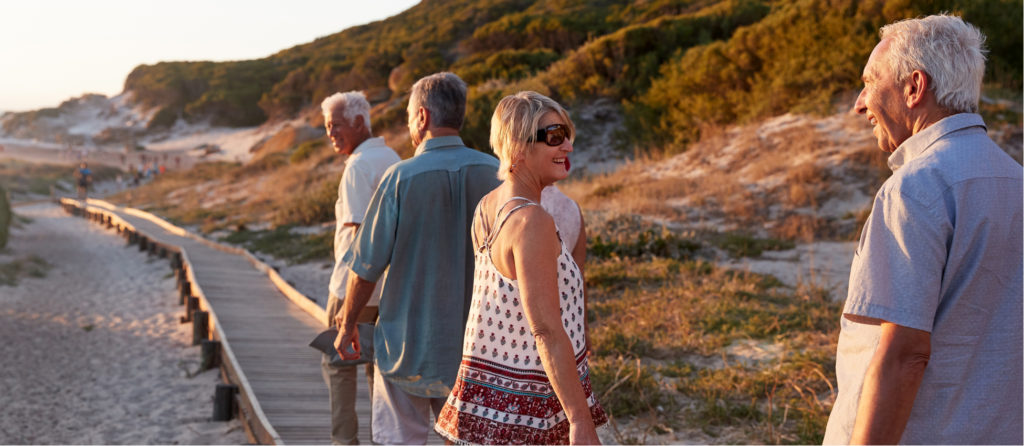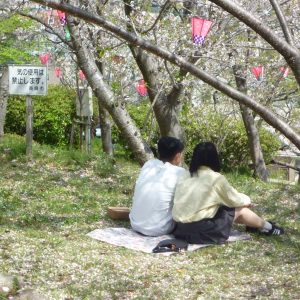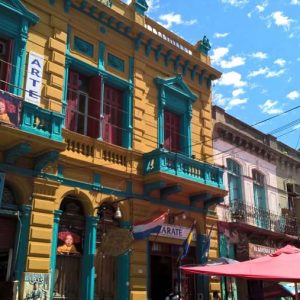Staying a couple of nights at The Coach House, a five-star cottage near Hilgay, puts the whole of Norfolk and beyond at your disposal. So where do you start?
On our visit, the journey from Gloucestershire was part of the adventure. It was good to be back in Big Sky country – we lived in Lincolnshire for a while, many years ago – with agricultural lands, massive open fields criss-crossed by dykes, willow trees bordering levees beside the bigger waterways, and roads straight as a die.
That’s just one side of the county, however. Technology is moving on, with wind turbines taking over from windmills, and the further you go the more varied the landscape.
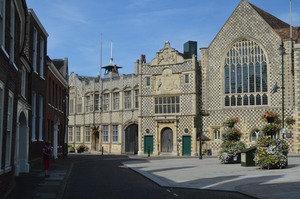 After a night’s rest at our holiday home near Hilgay, just south of Market Deeping, we headed north to the coast. En route, King’s Lynn proved well worth a stop. At first sight it’s somewhat industrial, but head towards the river and an amazing assortment of medieval buildings is revealed.
After a night’s rest at our holiday home near Hilgay, just south of Market Deeping, we headed north to the coast. En route, King’s Lynn proved well worth a stop. At first sight it’s somewhat industrial, but head towards the river and an amazing assortment of medieval buildings is revealed.
We spent a couple of hours walking the streets, following in the steps of the port’s Hanseatic merchants and detouring to stroll alongside the River Great Ouse. The buildings date from the 12th century, and there are some absolute crackers, Holy Trinity Guildhall with its chequerboard pattern being my absolute favourite.
The Tourist Information Centre, appropriately housed in the Custom House, has a wealth of leaflets on walks, trails and activities around the town. Had we had a little more time I’d have been tempted to part of the Sir Peter Scott walk, crossing the river by pedestrian ferry and road bridge and looking out for the birdlife along the river’s mudflats.
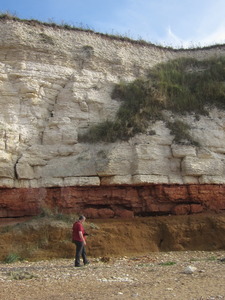 From King’s Lynn we headed north. It was one of the hottest September days for over a century, and cooling sea breeze sounded ideal so we headed towards Hunstanton. Here the landscape is chalk, gently undulating and wooded, and anyone with an interest in old churches will be spoilt for choice, as each place of worship seems to have its own style and local stone.
From King’s Lynn we headed north. It was one of the hottest September days for over a century, and cooling sea breeze sounded ideal so we headed towards Hunstanton. Here the landscape is chalk, gently undulating and wooded, and anyone with an interest in old churches will be spoilt for choice, as each place of worship seems to have its own style and local stone.
Hunstanton itself is a traditional seaside town, with sand, rock pools and sea plus all the trimmings: floral gardens, crazy golf, bowling, souvenir shops, fish and chips, amusement arcades and more. If that isn’t to your taste, just a little further along the coast you’ll find Cliff Car Park where you can stroll along a beach free of commercial opportunities, and marvel at the striped cliffs of carrstone topped by red and white chalk.
Meanwhile our fellow guests visited the busy coastal village of Burnham Overy Staithe, a tidal inlet with small shops and cafes and then followed the Peddars Way for a couple of miles, ending up on the sand dunes overlooking Holkham Bay. Totally unspoilt (the fact that you have to walk there means you can almost have the place to yourself), this is firmly on our list for the next visit – their photos showed that, in the September sunshine, it looked more Mediterranean than British.
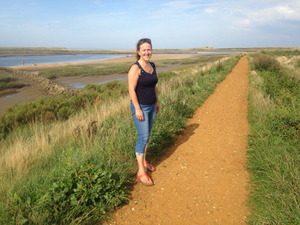 The area offers all manner of activities – boating, cycling, fishing, bird watching, museums etc – and our ‘must-see’ list for next time includes: Wolferton Royal Station, the stopping point for the royals’ country retreat at Sandringham House; the Green Britain Centre at Swaffham, complete with wind turbine with its own viewing platform; Thetford Forest Park; the cathedral cities of Ely and Cambridge; and a spot of seal watching at one of the coastal reserves.
The area offers all manner of activities – boating, cycling, fishing, bird watching, museums etc – and our ‘must-see’ list for next time includes: Wolferton Royal Station, the stopping point for the royals’ country retreat at Sandringham House; the Green Britain Centre at Swaffham, complete with wind turbine with its own viewing platform; Thetford Forest Park; the cathedral cities of Ely and Cambridge; and a spot of seal watching at one of the coastal reserves.
Overall my impression of this area of Norfolk comprised unspoilt beaches, countryside and towns that still retain their own character, and a climate suited to outdoor activities. We’ll be back for a longer stay to take in the delights of a county with so much to offer.
